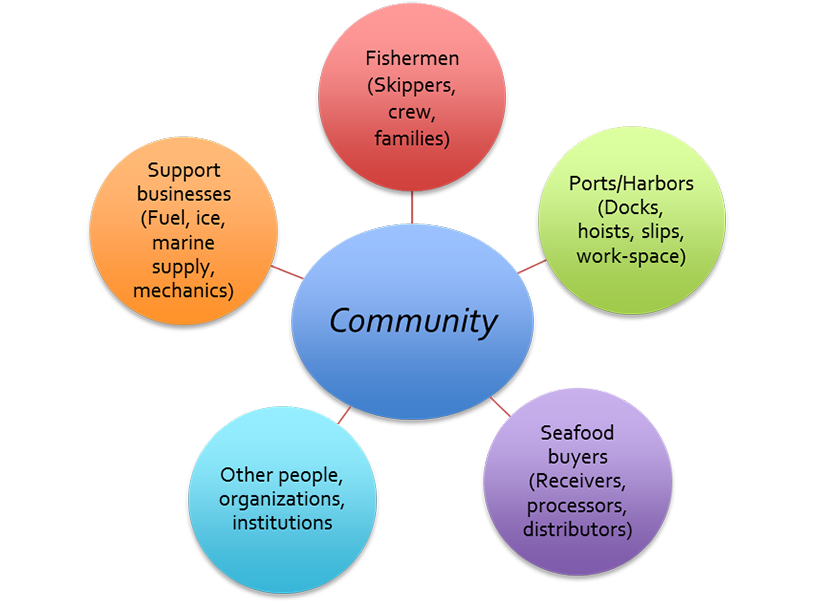Breadcrumb
- Discover California commercial fisheries
- Fishing communities
Fishing communities

Fishing communities are an important part of California’s maritime heritage and economy and its coastal and ocean ecosystems. Viable commercial fisheries require not only healthy marine resources and habitat, but also people and businesses to support fishing activities. Those activities, in turn, support local economies and provide seafood to consumers.
According to the Federal Magnuson-Stevens Fishery Conservation and Management Act, a fishing community is defined as
… substantially dependent on or substantially engaged in the harvest or processing of fishery resources to meet social and economic needs, and includes fishing vessel owners, operators, and crew and United States fish processors that are based in such community.

However, a fishing community depends on these players and more to thrive and to get the catch to consumers. For example, harbors provide hoists, docks, boat slips and other amenities that are critical for offloading the catch, and provide “safe harbor,” protecting boats and people from potentially severe weather and ocean conditions. Likewise, marine supply, electronics, boat maintenance, and other businesses are essential for keeping fishing boats operating safely and effectively. Together, fishing operations, these support businesses, and the people who run them, are dependent on one another for their livelihood and well-being. As communities, they are connected to each other socially and economically, both locally and across regions.
And although the definition above focuses on communities as geographic places, fishing communities also may be defined by shared occupation or interest. Examples include the West Coast groundfish trawl fishing community and the southern California sea urchin and sea cucumber dive community.
Information sources
- Clay P.M., and J. Olson. 2008. Defining 'fishing communities': Vulnerability and the Magnuson-Stevens Fishery Conservation Act. Human Ecology Review 15:143-60.
- Norman, K., J. Sepez, H. Lazrus, N. Milne, C. Package, S. Russell, K. Grant, R.P. Lewis, J. Primo, E. Springer, M. Styles, B. Tilt, and I. Vaccaro. 2007. Community Profiles for West Coast and North Pacific Fisheries: Washington, Oregon, California, and Other U.S. States. Seattle, WA: NMFS Northwest Fisheries Science Center, 602 pp.
- Pomeroy, C., and M. Dalton. 2003. Socio-Economics of the Moss Landing Commercial Fishing Industry. Report to the Monterey County Office of Economic Development and the Moss Landing Study Steering Committee. Salinas, CA: Monterey County Office of Economic Development, 134 pp.
- Pomeroy, C., C. Thomson and M. Stevens. 2010. California's North Coast Fishing Communities: Historical Perspective and Recent Trends. California Sea Grant Technical Report T-072, La Jolla: California Sea Grant, August, 340 pp. Pacific Fishery Management Council (PFMC): Habitat and Communities: Fishing Communities
- Pacific States Marine Fisheries Commission (PSMFC) Pacific Fisheries Information Network (PacFIN) and Fisheries Economics Data Program (EFIN)